deepeye.hu
Astronomical Drawings of Peter Kiss
Astronomical Drawings of Peter Kiss





In 2012 we parted with the Vela Supernova Remnant with a slight bad taste in my mouth. I planned to draw its brightest part, the Pencil Nebula with my little 4" Newtonian telescope. But that time I didn't see the nebula at all without an (OIII filter). To make things worse, that time I drew part of the starfield (the brighter stars) from a map which I don't like. I don't consider it too ethical, it takes away from the experience and it might negatively affect the end result as well.
In 2016 I still had two nights before I got the 16" telescope and I needed an objective. Sanyi suggested me to draw the Vela Supernova Remnant and I really got to like the idea. I also thought I would take a bit of a revenge. The Vela Supernova Remnant has a huge apparent size and it lies close to the Milky Way therefore the starfield is very rich. It would be a huge project to draw everything by the telescope, probably measurable in years even under the stable Namibian sky. So I resorted to predrawing the starfield again. This is a panorama drawing covering a larger area than a field of view. After the idea was born I had a couple of hours left until the night. I neither wanted to overcomplicate it nor make it too easy for myself. So I opened the Uranometria and drew all the stars to my sketchbook. Using the same method as in live by the telescope. So I had the starfield to 9.5m and I could mentally prepare for the observation a bit as well. To make it clear again this drawing was 99% percent drawn on a predrawn starfield.
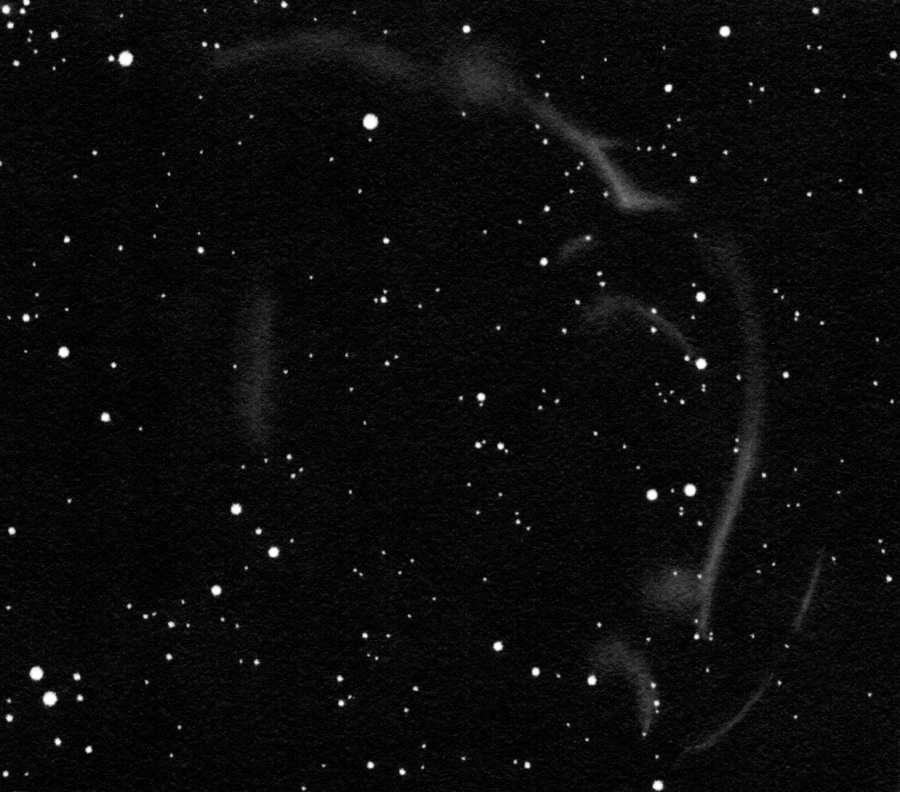
Two things made a difference compared to the previous negative observation: we came 1.5 months earlier therefore Vela was much higher in the evening sky. And I used an OIII filter this time. To my surprise this not only revealed the Pencil Nebula in my small telescope but the fainter fragments of this huge nebula became visible as well. These were my 2016 targets.
Extremely faint. It is absolutely on the limit and yet I am 100% sure that I have seen it. At least the brighter parts on my drawing. It is a very good feeling to be able to see these very faint and thin fragments with huge effort.
The type II supernova that created the nebula exploded about 11 - 12.000 years ago in a distance of about 800 light years. That means it is a relatively old and nearby supernova remnant which accounts for its huge size. What remained from the core of the star is now the Vela Pulsar (PSR J0835-4510). It can be found down (south) of the center of my drawing. It is inaccessible with amateur telescopes but it is the brightest stationary X-ray source in the sky. The impulses follow each other at 11 Hz which means that the neutron star spins every 89 milliseconds.
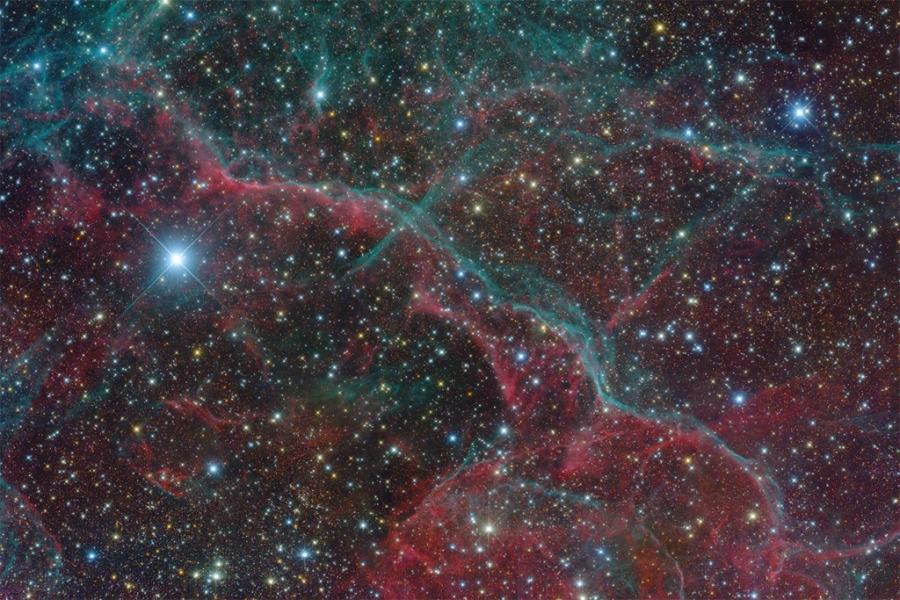
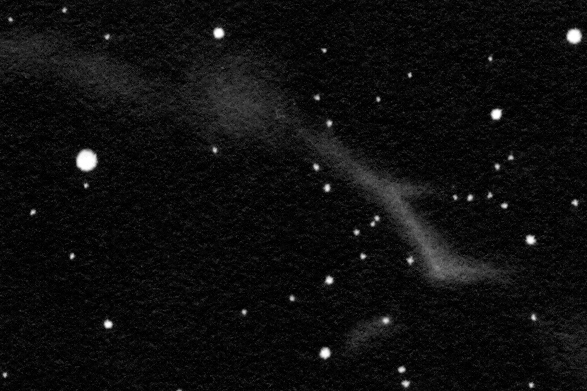
There are several beautiful photos of the Vela Supernova Remnant. It is not an easy target to photograph due to its faintness, large size and the rich starfield. You can see Iván Éder's photograph of one of the most interesting parts to the left. It was made using an 8" astrograph in 2010. The photo shows natural colors. The green fragments are light emitted from doubly ionised oxygen atoms (OIII) while the red parts are due to ionised hydrogen (HII, mainly H-alpha wavelength). This is a very thin ionised gas that once came from the outer layers of the progenitor star that was scatterd around in the supernova explosion. The Vela Pulsar is responsible for the ionisation of this gas.
I could only see the brighter parts of the green colored areas. The rest was cut off by the OIII filter. But even without the filter they would have been far too faint.
You can see basically the whole bubble of the supernova remnant on a couple of spectacular photos. One such is Robert Gendler's and Roberto Colombari's amazing mosaic they created using their own images and DSS (Digitized Sky Survey) plates:
http://www.robgendlerastropics.com/Vela-DSS-New.html
Or the mosaic created by Don Goldman and Josep Drudis:
https://astrodonimaging.com/gallery/vela-supernova-remnant-wide-view/
Just by taking a quick look at those photos you can see that the area is extemely complex. Several diffuse nebulae of different origin character and age are overlapping in this exciting corner of the sky.
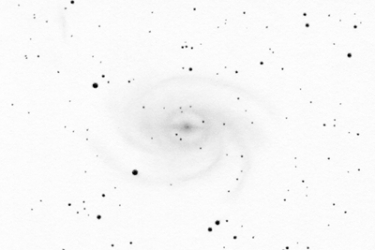
Pavo galaxy
The grand spiral galaxy of Pavo
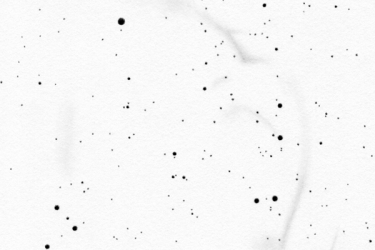
Panorama drawing
Huge and faint supernova remnant in the southern sky
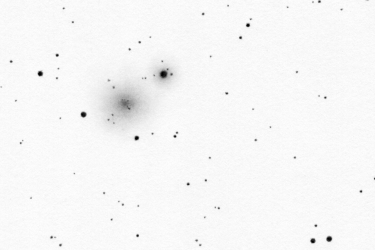
Centaurus globular cluster
The second globular in Centaurus

Apus globular cluster
Globular cluster close to the Southern celestial pole
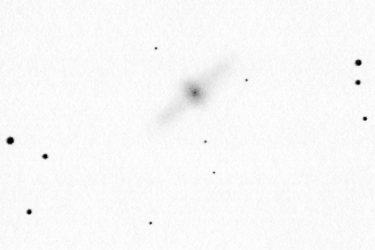
Centaurus galaxy
Polar ring galaxy
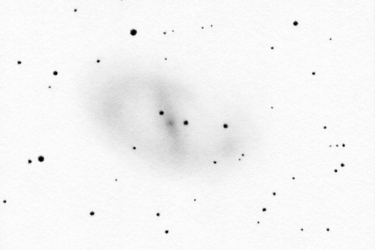
Ara galaxy
Barred spiral galaxy in the thick of the Milky Way